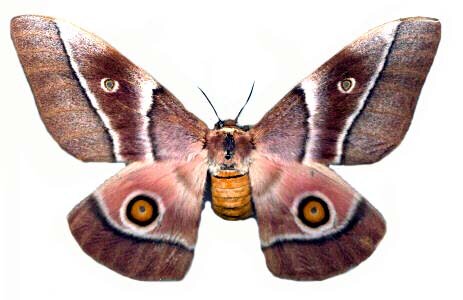|
LINKS
|
MOPANE WORM The mopane worm is a large edible caterpillar that forms the basis of a multi-Million Rand trade in the Limpopo Province, Mpumalanga, Botswana and Zimbabwe. Mopane Worm, Imbrasia belina, Order Lepidoptera The mopane worm is a large caterpillar that feeds on the mopane tree, Colophospermum mopane. The adult stage is a large and attractive Emperor moth (Family Saturnidae). The worm is an important source of protein and income to many people. However, the trade is threatened by over-harvesting, and mopane worms are now rare or extinct in some areas where they were once common. In order to safeguard the next crop, it is vital to leave enough of the worms to complete the life cycle by forming moths and laying eggs, thus ensuring the future of the industry. One of the greatest problems is the shortsighted destruction of large mopane trees as a way of harvesting worms that are too high to reach. Mopani worms are being studied to try and find out more about the extent to which this resource can be harvested on a sustainable basis. Dr Rob Toms at the Transvaal Museum thinks that the key to sustainable utilization is education. A poster on the subject is being produced at the Transvaal Museum. The mopane worm is one of southern Africa’s economically important insects, with great potential for quick development, but would however depend on sustainable utilization. If enough worms (e.g. 10%) are not left to produce eggs for the next season the mopane worm industry will continue to decline.
Mopane worm recipe Caterpillars are prepared for eating by squeezing out the gut contents before they are fried in their own body fat or boiled in a little water. Most of the caterpillars are dried so that they can be stored for use throughout the year. Dried caterpillars may be eaten dry as a snack or rehydrated and cooked in a little water before they are fried in oil with onion and tomato. They may be served with pap (maize meal porridge), onion and tomato gravy and atchar (chili sauce).
Mopane worm Links: NEW: Ethno-ecology at the Transvaal Museum Lepidoptera at the Transvaal Museum A poster on the subject produced by the Transvaal Museum click The Mopane Worm - Indigenous Knowledge in the Classroom Nutritional Value of Mopane Worms Stinkbugs and mopane worms for Aids patients Toms, R. and Thagwana, M. 2005. On the trail of missing Mopane Worms. |



